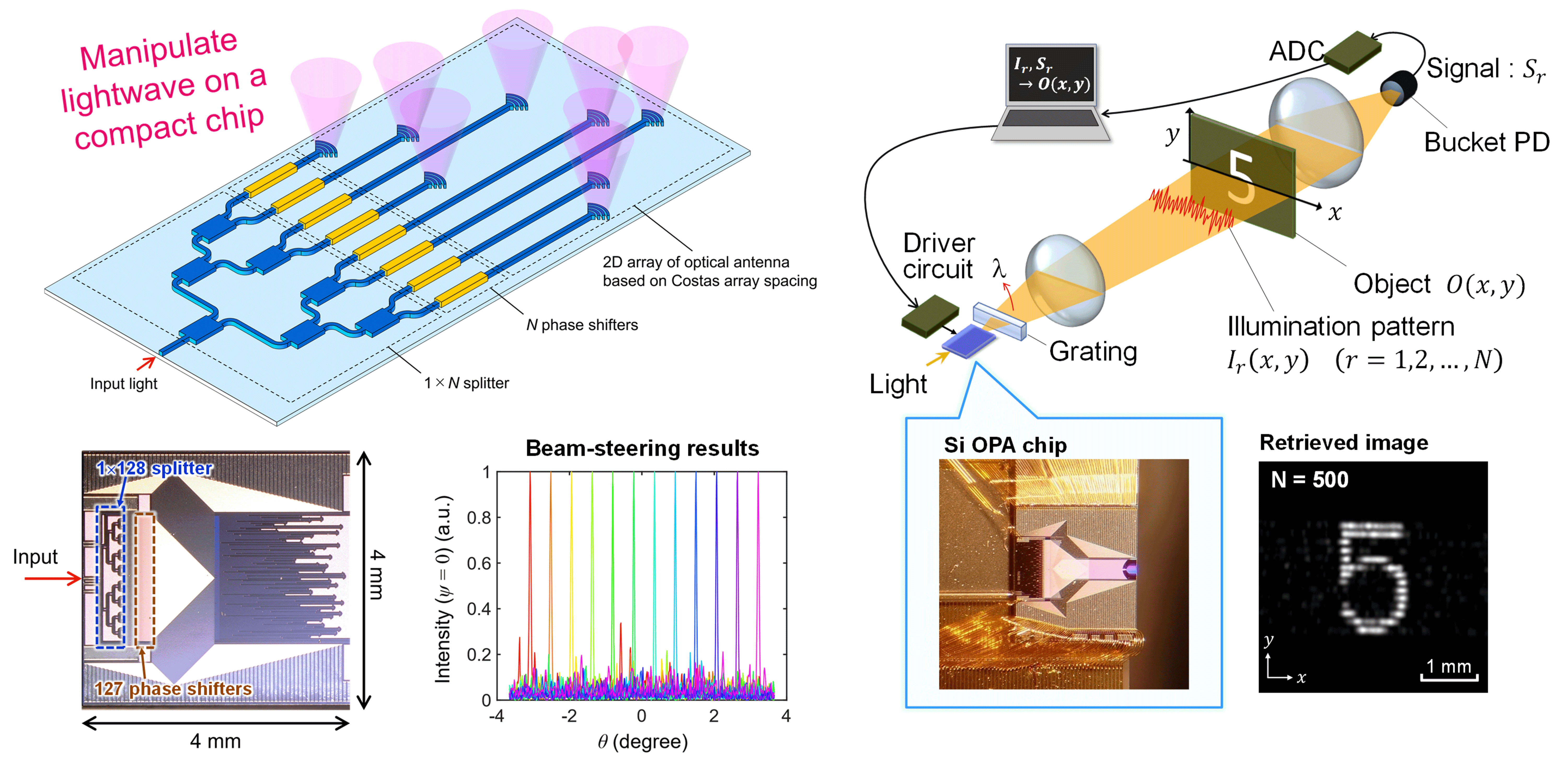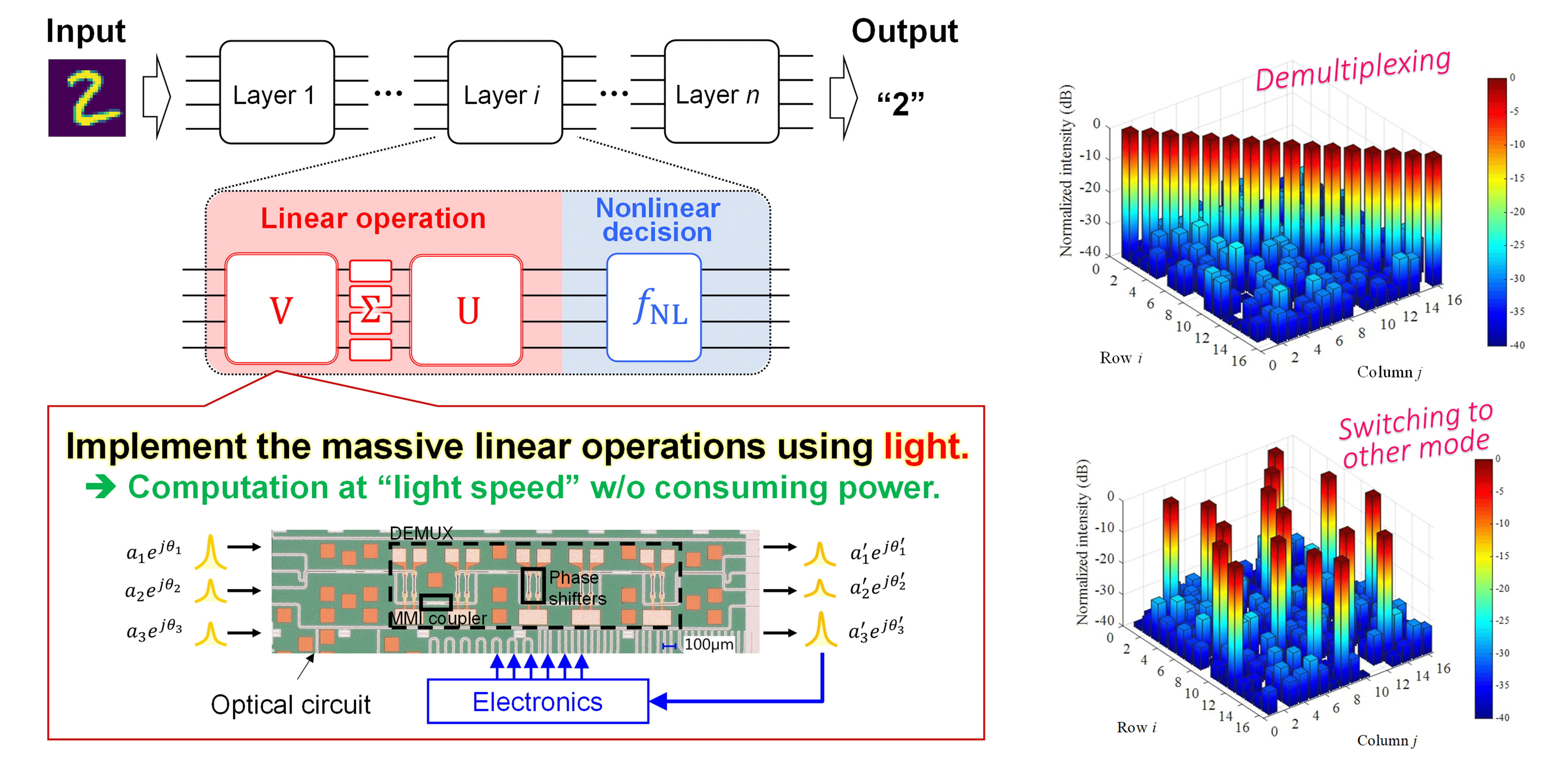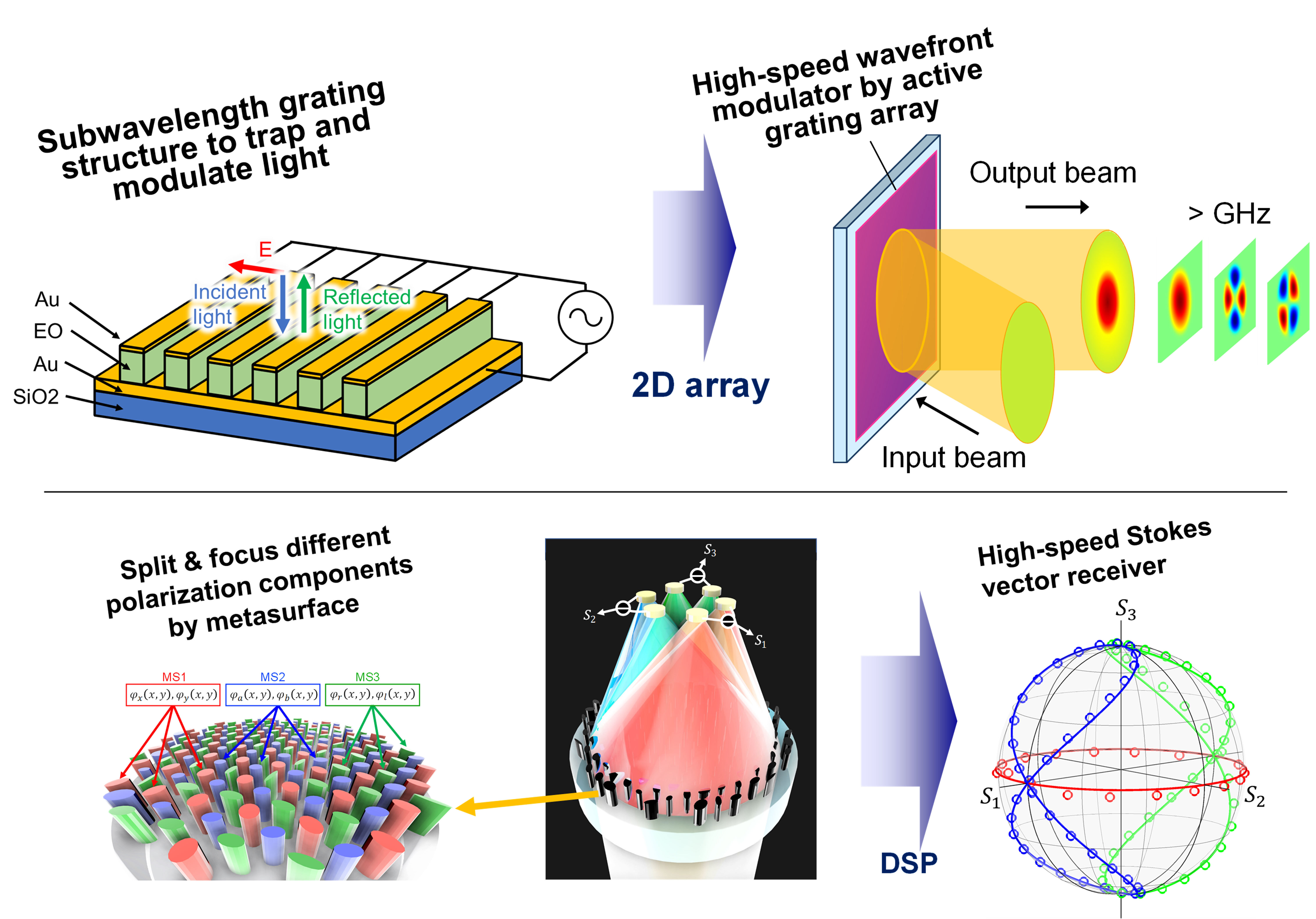
TANEMURA Takuo Associate Professor
Hongo Campus
Nano Physics & Device Technology
Nanostructural physics
Optical engineering, Photon science
Electron device/Electronic equipment
Communication/Network engineering
Measurement engineering
Semiconductor integrated photonics
Our research focuses on integrated photonics, which invoves using a compact semiconductor chip of a few millimeters in size to manipulate the state of light. By leveraging the unique properties of "light", such as ultrabroad bandwidth, parallelism, and linearity, and offloading the intelligent digital computations to "electronic" circuits, we aim to create innovative photonic devices that can be applied to a wide range of fields, including next-generation optical communications, imaging, computing, and more.
Research field 1
Photonic integrated beam-steering and imaging devices

Phased-array antennas used in wireless communications is applied to the optical wavelength band and integrated within a few millimeter square semiconductor chip to realize high-speed beam steering and imaging. By controlling numerous optical phase shifters arranged in an array, arbitrary optical wavefronts can be synthesized, enabling, for example, high-speed switching of the emission direction. We have successfully developed large-scale optical phased-array devices with over 100 channels, and demonstrated high-resolution beam scanning and nanosecond switching. These devices can be used to realize cost-effective LiDARs (3D imaging sensors using laser light), which will be indispensable for future self-driving cars and autonomous robots. Novel computational imaging algorithms, such as ghost imaging and compressed sensing using these innovative devices, are also important research topics.
Research field 2
Optical unitary processors / Machine-learning optical circuits

By scaling the beam-steering device to multiple inputs, a "photonic unitary processor" can be realized, which converts orthogonal spatial modes (bases) of light into any different orthogonal modes. We have proposed and developed our original photonic unitary processor based on the concept of "multi-plane light conversion," and demonstrated that arbitrary unitary processing can be obtained by reconfiguring it using various algorithms. Such universal optical circuits are expected to find vast applications, including next-generation spatial mode-multiplexed optical communication, quantum computing, and low-energy machine learning circuits.
Research field 3
Metasurface-based light-manipulation / detection devices

By using subwavelength structures (called metasurfaces) fabricated on a surface of a chip, we can freely manipulate and detect the wavefront and polarization state of light. For example, we have proposed and demonstrated a novel light-modulating device that localizes normal-incident light inside a thin electro-optic (EO) polymer film using a subwavelength grating structure. Such a device enables simultaneous modulation of a large number of optical signals as well as high-speed synthesis of optical wavefronts. By finely designing each nanostructure (meta-atom), it is also possible to split and focus incident light into its polarization components. We also work on applications of these devices to next-generation optical communication, imaging, and computing systems.